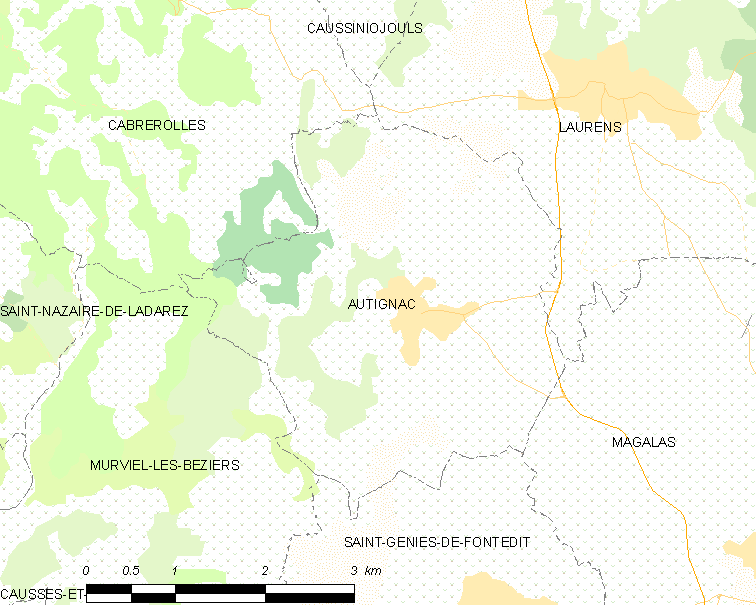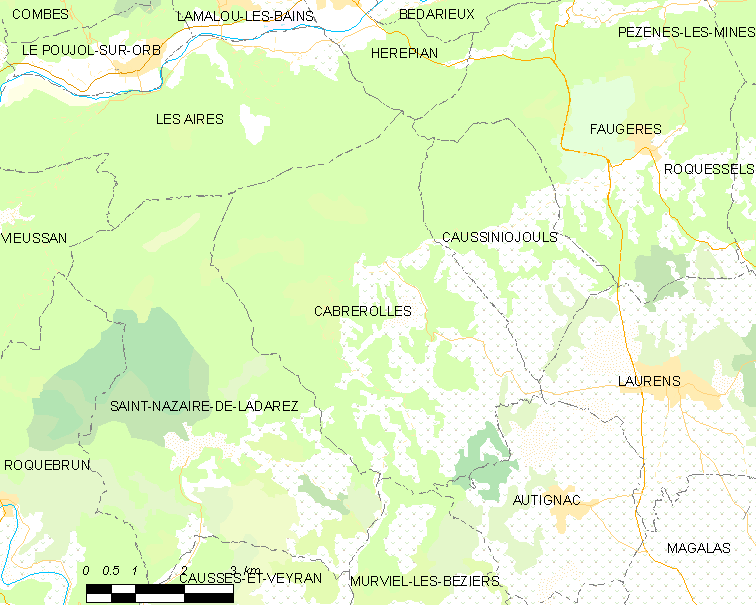|
Faugères AOC
Faugères (also known as Coteaux-du-Languedoc Faugères) is an ''Appellation d'origine contrôlée'' (AOC) in the Languedoc-Roussillon wine region in France and is named after the town of Faugères, which lies 30 km north of Béziers, in the foothills of the Massif Central, in the département of Hérault. It is a local classification within the Coteaux-du-Languedoc AOC. History The Middle Ages Faugères is not the oldest winemaking area in Languedoc. In the Middle Ages, its land was mainly used for growing grain, and olives. However, there was some viticulture, most notably the production of altar wine. The Modern Period Faugères started to flourish as a wine-producing area around the time of the French revolution, i.e. around the start of the 19th century. Local wine was in fact mainly used to produce a type of ''eau de vie'', using a distilling method from the Charente region, that was previously unknown in the Languedoc. This method was called 'fine', so this eau de ... [...More Info...] [...Related Items...] OR: [Wikipedia] [Google] [Baidu] |
Appellation D'Origine Vin De Qualité Supérieure
An appellation is a legally defined and protected geographical indication primarily used to identify where the grapes for a wine were grown, although other types of food often have appellations as well. Restrictions other than geographical boundaries, such as what grapes may be grown, maximum grape yields, alcohol level, and other quality factors may also apply before an appellation name may legally appear on a wine bottle label. The rules that govern appellations are dependent on the country in which the wine was produced. History The tradition of wine appellation is very old. The oldest references are to be found in the Bible, where ''wine of Samaria'', ''wine of Carmel'', ''wine of Jezreel'', or ''wine of Helbon'' are mentioned. This tradition of appellation continued throughout the Antiquity and the Middle Ages, though without any officially sanctioned rules. Historically, the world's first exclusive (protected) vineyard zone was introduced in Chianti, Italy in 1716 and th ... [...More Info...] [...Related Items...] OR: [Wikipedia] [Google] [Baidu] |
Fos, Hérault
Fos (; Languedocien: ''Fòs'') is a commune in the Hérault department in southern France. Winemaking Fos is one of the seven communes which produces Faugères AOC wine. Population See also *Communes of the Hérault department The following is a list of the 342 communes of the Hérault department of France. The communes cooperate in the following intercommunalities (as of 2020):Communes of Hérault {{Hérault-geo-stub ... [...More Info...] [...Related Items...] OR: [Wikipedia] [Google] [Baidu] |
Caussiniojouls
Caussiniojouls is a commune in the Hérault department in southern France. Winemaking Caussiniojouls is one of the seven communes which produces Faugères AOC wine. Population See also *Communes of the Hérault department The following is a list of the 342 communes of the Hérault department of France. The communes cooperate in the following intercommunalities (as of 2020):Communes of Hérault {{Hérault-geo-stub ... [...More Info...] [...Related Items...] OR: [Wikipedia] [Google] [Baidu] |
Autignac
Autignac (; Languedocien: ''Autinhac'') is a commune in the Hérault department in southern France. Winemaking Autignac is one of the seven communes which produces Faugères AOC wine. Population See also *Communes of the Hérault department The following is a list of the 342 Communes of France, communes of the Hérault Departments of France, department of France. The communes cooperate in the following Communes of France#Intercommunality, intercommunalities (as of 2020): References  Communes of Hérault
{{Hérault-geo-stub ...
Communes of Hérault
{{Hérault-geo-stub ...
[...More Info...] [...Related Items...] OR: [Wikipedia] [Google] [Baidu] |
Caussiniojouls Vue Generale
Caussiniojouls is a commune in the Hérault department in southern France. Winemaking Caussiniojouls is one of the seven communes which produces Faugères AOC wine. Population See also *Communes of the Hérault department The following is a list of the 342 communes of the Hérault department of France. The communes cooperate in the following intercommunalities (as of 2020):Communes of Hérault {{Hérault-geo-stub ... [...More Info...] [...Related Items...] OR: [Wikipedia] [Google] [Baidu] |
Marin (wind)
The Marin is a warm, moist wind in the Gulf of Lion of France, blowing from the southeast or south-southeast onto the coast of Languedoc and Roussillon. It brings rain to this region which it has picked up crossing the Mediterranean, and also can bring coastal fog. The clouds carried by the Marin frequently cause rain on the slopes of the mountains in the interior, the Corbières Massif, Montagne Noire, and the Cévennes. The wind is usually dried by the föhn effect when it crosses the mountains and descends on the other side. The Marin wind contributes to the creation of another regional wind, the . The Marin blows gently from the offshore coast of the Mediterranean towards the Cévennes and the Montagne Noire. When this occurs it creates fine weather for swimming in the gulf, but when the wind is strong it creates heavy swells which strike the coast with high breaking waves.Descriptions of local and regional winds on the Internet site of Meteo-France. The Marin is next in f ... [...More Info...] [...Related Items...] OR: [Wikipedia] [Google] [Baidu] |
Tramontane
Tramontane ( ) ; french: tramontane ; el, τραμουντάνα, tramountána, ; it, tramontana ; la, trānsmontānus ; mt, tramuntana ; sl, tramontana ; sh, tramontana ; es, link=no, tramontana . is a classical name for a northern wind. The exact form of the name and precise direction varies from country to country. The word came to English from Italian ''tramontana'', which developed from Latin ''trānsmontānus'' (''trāns-'' + ''montānus''), "beyond/across the mountains", referring to the Alps in the North of Italy. The word has other non-wind-related senses: it can refer to anything that comes from, or anyone who lives on, the other side of mountains, or even more generally, anything seen as foreign, strange, or even barbarous. Traditions in various countries and regions Spain In Spain the wind is called the ''tramuntana'' or in Catalan and ''tramontana'' in Spanish, Galician and Basque. The wind also lends its name to the Serra de Tramuntana in Mallorca. Th ... [...More Info...] [...Related Items...] OR: [Wikipedia] [Google] [Baidu] |
Mediterranean Climate
A Mediterranean climate (also called a dry summer temperate climate ''Cs'') is a temperate climate sub-type, generally characterized by warm, dry summers and mild, fairly wet winters; these weather conditions are typically experienced in the majority of Mediterranean-climate regions and countries, but remain highly dependent on proximity to the ocean, altitude and geographical location. This climate type's name is in reference to the coastal regions of the Mediterranean Sea within the Mediterranean Basin, where this climate type is most prevalent. The "original" Mediterranean zone is a massive area, its western region beginning with the Iberian Peninsula in southwestern Europe and coastal regions of northern Morocco, extending eastwards across southern Europe, the Balkans, and coastal Northern Africa, before reaching a dead-end at the Levant region's coastline. Mediterranean climate zones are typically located along the western coasts of landmasses, between roughly 30 and 45 ... [...More Info...] [...Related Items...] OR: [Wikipedia] [Google] [Baidu] |
Cabrerolles
Cabrerolles (; Languedocien: ''Cabrairòlas'') is a commune in the Hérault department in southern France. Winemaking Cabrerolles is one of the seven communes which produces Faugères AOC wine. As well as the main village, it has three hamlets, Lentheric, Liquière and Aigues-Vives, which all produce wine. Population See also *Communes of the Hérault department The following is a list of the 342 Communes of France, communes of the Hérault Departments of France, department of France. The communes cooperate in the following Communes of France#Intercommunality, intercommunalities (as of 2020): References Communes of Hérault {{Hérault-geo-stub ...[...More Info...] [...Related Items...] OR: [Wikipedia] [Google] [Baidu] |
Schist
Schist ( ) is a medium-grained metamorphic rock showing pronounced schistosity. This means that the rock is composed of mineral grains easily seen with a low-power hand lens, oriented in such a way that the rock is easily split into thin flakes or plates. This texture (geology), texture reflects a high content of platy minerals, such as micas, talc, chlorite group, chlorite, or graphite. These are often interleaved with more granular minerals, such as feldspar or quartz. Schist typically forms during regional metamorphism accompanying the process of mountain building (orogeny) and usually reflects a medium Metamorphism#Metamorphic grades, grade of metamorphism. Schist can form from many different kinds of rocks, including sedimentary rocks such as mudstones and igneous rocks such as tuffs. Schist metamorphosed from mudstone is particularly common and is often very rich in mica (a ''mica schist''). Where the type of the original rock (the protolith) is discernible, the schist is us ... [...More Info...] [...Related Items...] OR: [Wikipedia] [Google] [Baidu] |
Charles Rostaing
Charles Rostaing (9 October 1904 – 24 April 1999) was a French linguist who specialised in toponymy. by Jean-Claude Bouvier Biography  Charles Rostaing was one of the most famous specialists in French place names in general and in particular of the 20th century. He was also the grandfather of the biographer Alain Wodrascka.
After his higher studies from 1923 to 1926 in
Charles Rostaing was one of the most famous specialists in French place names in general and in particular of the 20th century. He was also the grandfather of the biographer Alain Wodrascka.
After his higher studies from 1923 to 1926 in
|




